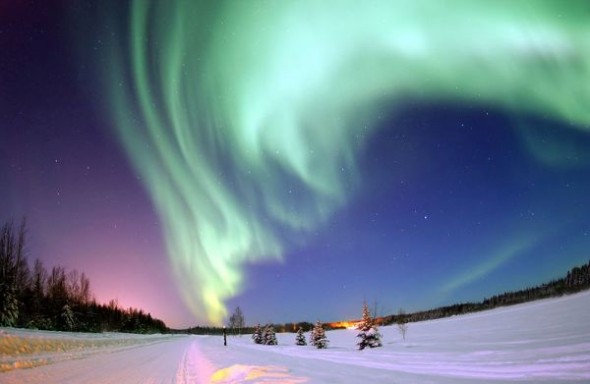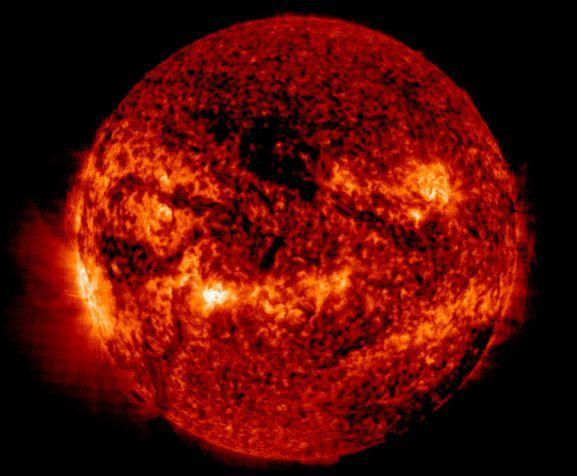
South African scientists track the sun’s storms
Every year thousands of tourists flock to the Arctic to view the psychedelic swirling skies of the aurora borealis, or northern lights. But few know that this beautiful display is actually a geomagnetic solar superstorm in our atmosphere. This general lack of knowledge of the sun’s effect on our atmosphere is why the South […]

Every year thousands of tourists flock to the Arctic to view the psychedelic swirling skies of the aurora borealis, or northern lights. But few know that this beautiful display is actually a geomagnetic solar superstorm in our atmosphere.

This general lack of knowledge of the sun’s effect on our atmosphere is why the South African National Space Agency (Sansa) is leading a research programme to create awareness of space weather in Africa. It is also investigating the impact solar superstorms have on technologies on Earth.
According to Sansa, solar superstorms can seriously disrupt mobile phones, GPS systems, power grids, satellites, avionics and high-frequency radio communication. This is a huge risk to the world’s economy and society.
The Solar and Heliospheric Observatory, a joint operation between Nasa and the European Space Agency, describes space weather as conditions on the sun, and in the solar wind, magnetosphere, ionosphere and thermosphere, that can influence the performance and reliability of both space- and ground-based technology, and endanger human life or health.
A storm occurs when the sun discharges a large burst of gas containing magnetic properties, called a coronal mass ejection. These are sometimes associated with solar flares.
Sansa’s Space Weather Regional Warning Centre in Hermanus monitors the sun daily and is able to pick up such events. It is one of 17 warning centres in the world that form part of the International Space Environment Service, providing information, early warnings and forecasts on space weather. The service is designed for communication and navigation systems in defence, aeronautics, navigation and communication.
It has also set up a space weather website featuring the latest visuals of the sun, information on solar flares, geomagnetic conditions and solar wind speed – which can travel as fast as 480 kilometres an hour.
Sansa’s managing director of space science, Lee-Anne McKinnell, said it has become vital to monitor space weather because of society’s growing dependency on technology. “Sansa aims to provide the right information, in the right format, at the right time, to the right people, to enable and facilitate the right decisions in regard to space weather-related issues.”
Watch: Footage of northern lights
http://youtu.be/Zz1HPLtecOg
Superstorms can disrupt economies
In the UK solar storms are listed as the fourth most serious threat on the National Risk Register. They are seen to have the potential to seriously damage the UK’s critical national infrastructure. Many other countries are becoming aware of the dangers of superstorms and are including them in their national risk assessments.
According to a risk report by Lloyds, a UK insurance group that takes on unusual and complex risks, severe space weather can disrupt business operations. Sansa agrees. “For example, a loss of power could lead to a cascade of operational failures that could leave society and the global economy severely disabled,” the organisation says on its website.
Though space weather affects the whole planet, the impact can be regional, said McKinnell. This is because different countries and regions use different technologies, and have different economic sectors.
She said it is best to be aware of, and avoid, the consequences of space weather by establishing efficient warning systems such as the centre in Hermanus.
In September this year two flares, one of which Nasa categorised as “most intense”, produced northern lights that could be seen in the US Midwest.
At the time experts said people on the ground need not to worry as the Earth’s atmosphere protected them. But astronauts in outer space are at risk.

Solar storms have caused disruptions on Earth as far back as 1859, with what is known as the Carrington Event. According to Nasa, this was the first and largest documented solar storm in the last 500 years. On 1 September 1859 at 11:18 am, solar astronomer Richard Carrington witnessed the flare through his private observatory telescope. Northern lights could be seen as far south as the Caribbean. According to Nasa, it interrupted telegraph communications, gave operators electric shocks and even started fires when discharges from the lines ignited telegraph paper.
A major flare on 4 August 1972 knocked out long-distance phone communications in some states of the northern US. It even forced telecoms giant AT&T to redesign its power system for transatlantic cables.
The 21st century has already seen three major storms. The Bastille Day event on 14 July 2000 short-circuited satellites and caused radio blackouts across the world. A massive flare on 28 October 2003 overwhelmed the spacecraft sensor measuring it. It was one of nine major flares over a two-week period. And on 5 December 2006, a sun storm damaged the solar X-ray imager instrument on the GOES 13 satellite and disrupted satellite-to-ground communications and GPS navigation signals for some 10 minutes.
By: Shamin Chibba
Source: :www.mediaclubsouthafrica.com
